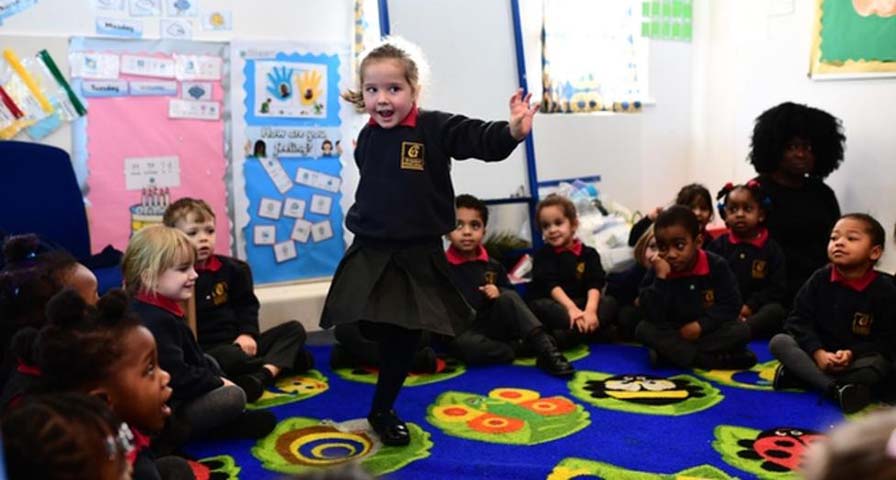Originally published Nov. 5, 2018 by BBC Sport.
By Andy Daly-Smith
Did you know that children are expected to achieve 60 minutes of health-enhancing physical activity every day, 30 minutes of which should occur during school?
Only one in ten achieve the in-school target; only one in five achieve the whole-day target, with many spending at least nine hours sitting every day.
 Classroom lessons can be the most inactive part of a child’s day. Have you ever questioned why children sit down to learn? Originating from Victorian times, pupils sat at desks formed in rows. In most modern day schools, little has changed.
Classroom lessons can be the most inactive part of a child’s day. Have you ever questioned why children sit down to learn? Originating from Victorian times, pupils sat at desks formed in rows. In most modern day schools, little has changed.
What is the solution?
Physically active learning involves fusing movement with traditional learning activities. While a common approach in reception classes, in most schools, seated learning dominates from Year One. Yet, physically active learning is suitable for all ages and can take a variety of forms. So what are the benefits?
Improved focus
Logic would suggest that introducing physical activity into the learning experience may disrupt children and negatively impact their learning. Yet, combining movement and learning improves behaviour and focus in the classroom.
Performing as little as four minutes of exercise in the classroom setting can improve a child’s behaviour and increase their focus for the following lesson. International research found that after three years of physically active learning, pupils were still more attentive following the activity.
Improved academic performance
After one active lesson, a child can improve their Maths performance by as much as 16%. Research from around the globe supports the use of physically active learning over longer periods of time. If your child learns in an active way, after two years, they could be four months ahead in maths and spelling compared to traditional seated classroom learning.
More active
Children move more when learning in an active way. In a 45-minute lesson, physically active learning can contribute an additional nine minutes more moderate-to-vigorous physical activity, when compared to a seated classroom lesson. What’s more, this contributes nearly one-third of the in-school 30-minute recommendation. Not only can increased physical activity benefit academic performance and physical health, it can also improve mental health.
Implementing change
Popular classroom-based approaches include active learning videos such as Super Movers, answering the register by performing a particular movement and learning challenges placed on boards in different corners. Outside of the classroom, active spelling relays or number challenges in the playground aid the learning of the core National Curriculum subjects. Beyond more formal learning opportunities, exploring fields and woodlands provides a fantastic way to combine movement with learning outside.
The benefits of physical activity learning are recognised at the highest level. Recently, the National Association of Head Teachers passed a motion to encourage all schools to adopt physically active learning. Is your local school involved?
Seeking IHT Spirit System information?




